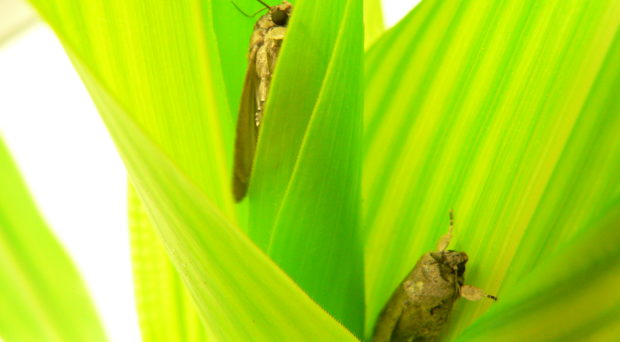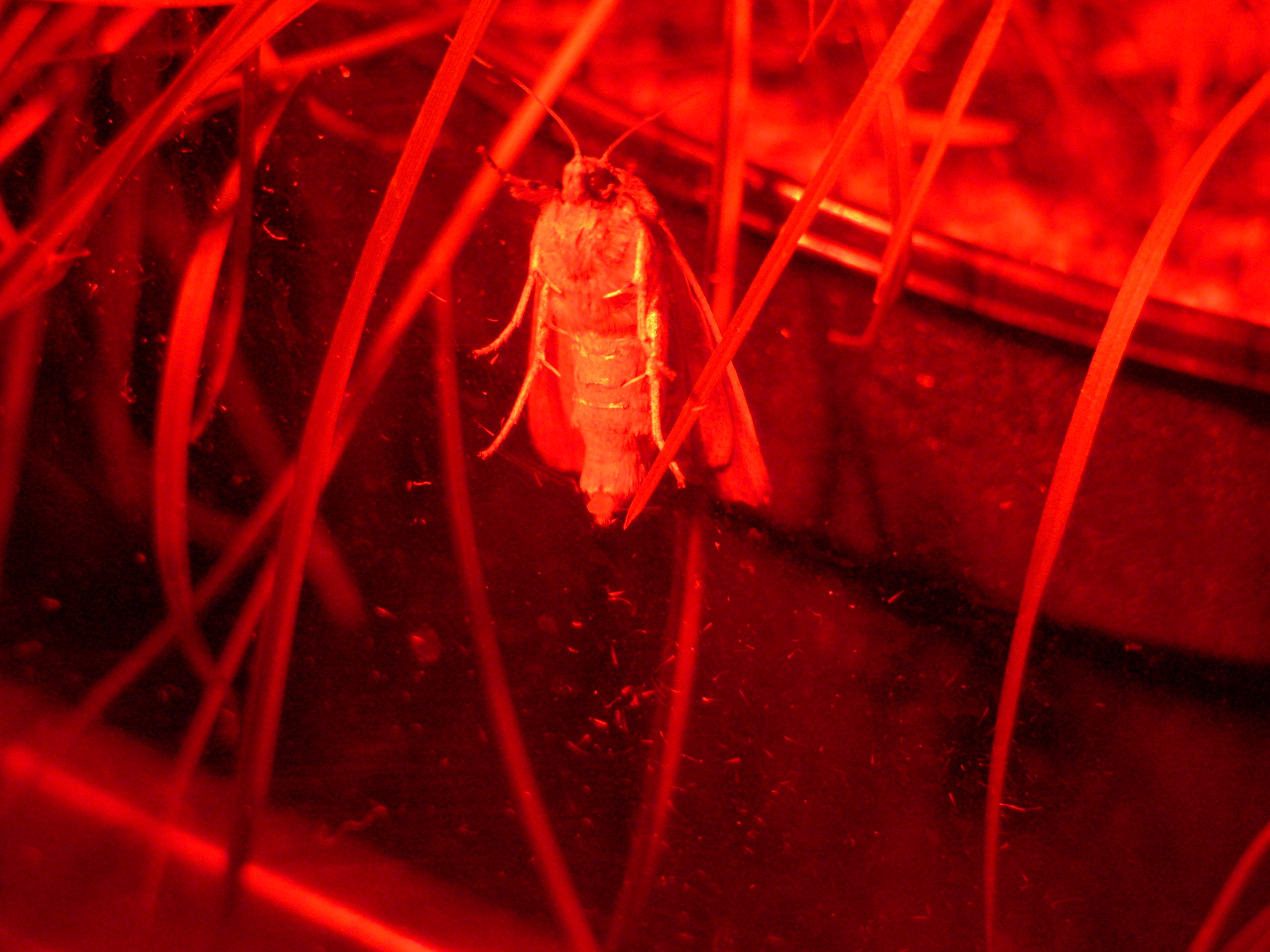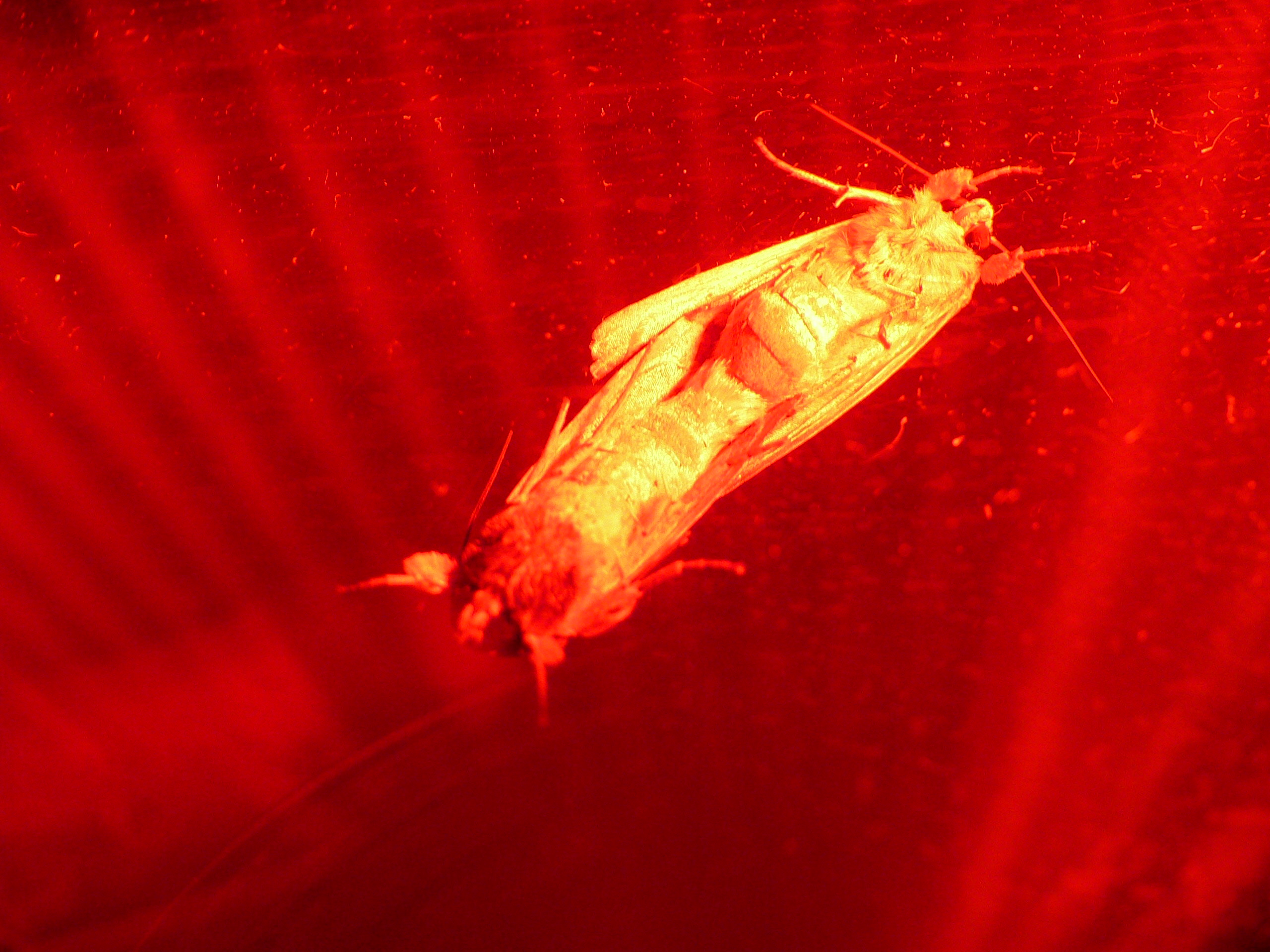
The notorious fall armyworm – you’ve probably heard of it. It’s a night active moth and it’s been in the news lately as an invasive species in Africa that causes severe damage to corn and other crops, threatens the livelihoods of farmers and may strip southern Africa of key food sources. The fall armyworm (Spodoptera frugiperda) originates from the Americas, where e.g. Brazil spends over 600 million dollars every year to control the pest.
While we need to figure out how to control the crop pest in Africa, there are some important things we can already learn from the moth. One of the central questions in biology is: where does all the biodiversity come from?
The fall armyworm can help us answer this question, as this species occurs as two different strains, called corn-strain and rice-strain. The strains look exactly alike, but differ in some features, like pheromone composition and host plant preference, but most importantly in their timing of mating: the corn-strain mates early in the night, while the rice strain mates late in the night. How did we find these differences?
We observed hundreds of couples in a dark room, lit by a red light and a red flashlight, as moths can’t see red light. After the lights went off and night set in, the corn-strain moths became active, soon followed by matings. Meanwhile, the rice-strain moths were sitting still, motionless. Only after several hours, the rice-strain moths woke up and started their mating activities.

When two populations (or strains) of the same species don’t mate with each other, genes are not exchanged between these populations. Mutations that occur spontaneously are thus not exchanged and stay within the population, so that different mutations can accumulate in each population. In this way, two populations will become more and more genetically different over time, which can result in the development into two species.
Looking at the strains in our dark room that were either mating early or late, we wanted to know what genetic differences had accumulated between the two strains that could explain their differences in mating times at night. Therefore, we hybridized the two strains and observed the mating activities of the parental strains together with the hybrids and their offspring throughout the night with our red flashlights.

We then analyzed all those individuals genetically, and by combining the observation and genetic data, we could identify one chromosome that explained most of the timing difference between the strains. We were excited when we also found out that this chromosome harbors a gene that is part of the circadian clock: vrille!
Thus, the circadian rhythm of the corn-strain and the rice-strain appear to be out of sync and we identified vrille as a candidate to cause the asynchrony. When comparing the DNA sequence of this gene between the strains, we found some interesting differences in the promoter region.
The circadian clock is an internal molecular clock present in most living beings on earth. Dependent on light input, genes and proteins interact with each other in a circadian rhythm that is roughly 24 hours. This rhythm helps mice, for example, to wake up and get active at night when they can’t easily be seen by predators, and it helps the fall armyworm to wake up at the right time to find a mating partner.

We also looked at differences in the mRNA levels at every hour for 24 hours and found that vrille is always more expressed in the rice-strain than in the corn-strain. This made us curious about how this difference influences the other genes of the circadian clock. Excitingly, we did find some differences in expression levels of the genes that directly interact with vrille in the circadian clock.
In short, we may have identified a mechanism underlying evolution in progress between two strains that seem to become two different species. A change in the promoter region of the gene vrille may cause a change in the transcription of the gene, which can influence the circadian clock. An altered circadian clock alters the behavior of the fall armyworm, causing the different strains to mate at different time points at night. This timing difference constitutes a mating barrier that keeps the strains apart and may facilitate the development into different species.
Thus, in addition to being a severe pest that needs to be eradicated, the fall armyworm has given us insights in the evolutionary process of speciation, which has led to the great biodiversity on earth.
Comments